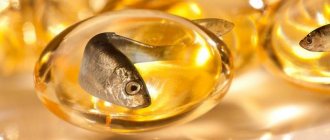Chemical properties
Ademetionine – S-adenosylmethionine , a coenzyme that takes part in the reactions of transfer of methyl groups throughout the body. This substance was first described in the 50s of the 20th century by the Italian scientist Cantoni. According to Wikipedia, the product has a molecular weight = 399.5 grams per mole. Normally, the enzyme is formed by adenosyltransferase from ATP and methionine in liver tissue.
In the structure of the methionine , a methyl group is attached to the sulfur atom, and in the composition of S-adenosylmethionine it actively participates in chemical interaction reactions. During the course of more than 40 metabolic reactions, a transfer occurs from the CH3 to proteins, nucleic acids , fats and other substrates.
This chemical compound is most often used in the form of white powder When administered parenterally, the drug has greater bioavailability compared to the tablet form. After taking the tablets, only 5% of the active substance is absorbed. For oral administration disulfate , tosylate , butadeine sulfonate , monosital disulfate , etc. are used.
Ademetionine in the treatment of chronic liver diseases with cholestasis
The liver is a central organ of chemical homeostasis, where a single metabolic and energy pool is created for the metabolism of fats and carbohydrates; in addition, the liver is involved in the synthesis of certain enzymes, vitamins, and is directly involved in water, mineral and pigment metabolism; The detoxifying function of the liver is extremely important.
The range of pathological conditions of the liver is very large, and most of these changes can be accompanied by a violation of any of the listed liver functions or many with one or another predominance.
Bile formation is one of the most important functions of the liver. Any disturbances in the synthesis, secretion or flow of bile, leading to biochemical, pathophysiological, pathological and anatomical changes, accompanied by certain clinical manifestations, are designated by the term “cholestasis”, which is classified into 2 groups: intrahepatic and extrahepatic. Extrahepatic cholestasis is caused by a mechanical obstruction in the ductal system, and intrahepatic cholestasis is caused by impaired hepatocyte function or impaired bile flow in the intercellular space. In turn, intrahepatic cholestasis is classified into two subgroups: hepatotubular (intralobular) and ductal (interlobular). The different types of cholestasis overlap to a large extent. The accumulation of bile acids inside liver cells can ultimately lead to their death, i.e. A vicious circle arises in which intrahepatic cholestasis caused by various types of liver damage in turn aggravates these disorders [1].
Heptral (ademetionine)—S-adenosyl-L-methionine—an amino acid that is synthesized in the body and is involved in enzymatic transamination and transsulfurization, synthesis and activation of hormones, neurotransmitters, nucleic acids, and phospholipids. By donating a methyl group during remethylation and transsulfurization, ademetionine promotes the formation of glutathione, the main cellular antioxidant that neutralizes the effects of a number of exo-endotoxins.
In medical practice, it is used in two forms: injection, consisting of 1 bottle with lyophilized ademetionine salt and 1 ampoule of solvent, which makes the injected medium neutral (pH 7.5 ± 1). The oral form of Heptral is white tablets in an enteric coating, insoluble in the acidic environment of the stomach. Ademetionine is a universal compound involved in three important metabolic reactions: transmethylation, transsulfuration and aminopropylation (polyamine synthesis), where it serves either as a group donor or an enzyme modulator. The active role of ademetionine in these reactions is due to the presence of a positive charge on the sulfur atom, due to which the sulfide-carbon bonds are broken.
Regardless of the pathogenesis of intrahepatic cholestasis, ademetionine plays an important role in both the development and prevention of intrahepatic cholestasis. Ademetionine is a methyl group donor, participating in transmethylation reactions (this is the biosynthesis of phospholipids, which are the main building blocks of the cell membrane). The amount of phospholipids determines the “fluidity” of the cell membrane. It has been shown that the “fluidity” of the cell membrane is the most important factor influencing membrane-associated enzymatic processes. The structure and composition of hepatocyte membranes are a key link in the regulation of the most important metabolic pathways involved in bile production (Chawla et al., 1990).
A decrease in the “fluidity” of the membrane leads to a decrease in the activity of the Na/K-ATPase pump and disruption of sodium-dependent syntransport systems (directly related to the transport of bile acids). Ademetionine is able to prevent such changes.
The second positive aspect of the influence of ademetionine is its participation in maintaining a sufficient level of glutathione, a sulfur-containing peptide related to the protection of liver cells from toxic damage by free radicals. Finally, by participating in sulfation reactions, ademetionine plays an important role in the detoxification of a number of metabolites, such as toxic bile acids, converting them into sulfates, which do not have a damaging effect on the cell. The previous two effects are directly related to protecting the liver from the toxic effect of ethanol, which is realized through acetaldehyde. These effects are prevented by ademetionine by maintaining mitochondrial glutathione transport.
Clinical studies of the effectiveness of Heptral in patients suffering from liver diseases with intrahepatic cholestasis began in the 90s. Thus, Frezza et al., 1990 treated 220 patients with biopsy-proven liver pathology with ademetionine. A necessary condition for treatment was at least a twofold increase in total and conjugated bilirubin and alkaline phosphatase in the blood serum. Patients received either 1600 mg of the drug orally or placebo. The duration of treatment was 15 days. At the same time, the effectiveness of Heptral was proven both in relation to clinical manifestations and laboratory indicators of cholestasis (compared to placebo). In 1992, Manzillo et al. 420 patients were treated in 2 stages (first - 800 mg per day intravenously for 2 weeks, then 1600 mg per day or placebo for 8 weeks). They confirmed an even greater effect with increasing duration of treatment (it amounted to 68%). Thus, it has been shown that in patients with chronic liver diseases, longer treatment is associated with further improvement in liver biochemical parameters. Subsequently, the effectiveness of ademetionine was confirmed in women with intrahepatic cholestasis during pregnancy (Frezza M., Terpin, 1992), in patients with depression (Rozenbaum, 1990), in patients with chronic pancreatitis - in order to inhibit the activity of free radicals (Bilton et al.,1994); in acute pancreatitis (Braganza et al., 1995) - to reduce oxidative stress. Other possibilities for using Heptral are also being considered (prevention of liver damage during parenteral nutrition, during hypoxic conditions, during liver transplantation operations). Evaluation of the effectiveness of Heptral in different groups of patients (alcohol damage, viral, in the stage of liver cirrhosis, in the dystrophic stage with hepatic cell failure). Various doses of the drug, different routes of administration, and different durations of treatment were considered (500 mg, 800 mg, 1600 mg). All studies were compared with placebo, and the effect of Heptral was 60% or higher, oral administration enhanced the effect of parenteral administration (treatment duration ranged from 2 weeks to a month or more (Lieber CS, 1999; Di Perri T. et al., 1999; Mato JM , 1999)). The tolerability of Heptral was assessed by all researchers as good. Side effects in the form of short-term insomnia, nausea, sweating, mild phlebitis in a double-blind study were noted in a very small number of patients and did not differ from the placebo group.
Considering the above, we also assessed the effectiveness of Heptral in 60 patients with chronic liver diseases and cholestasis syndrome.
Characteristics of patients:
- primary biliary cirrhosis—8 patients;
- alcoholic hepatitis—22 patients;
- chronic hepatitis C—20 patients;
- chronic hepatitis B—4 patients;
- chronic viral hepatitis at the stage of liver cirrhosis—4 patients;
- primary sclerosing cholangitis—2 patients.
There were 38 men, 22 women; age from 30 to 65 years (average age 43.4±1.7 years); the average duration of the disease is 5.7±3 years (minimum - 3 years, maximum - 12 years). Patients with alcoholic liver damage for a long time (from 15 to 17 years) drank alcohol with a frequency of 2 to 7 times a week; The daily dose of alcohol in terms of ethanol ranged from 60 to 200 ml. The criteria for inclusion in this group were: diffuse nature of liver damage, “alcoholic” history, systemic nature of the damage, absence of markers of hepatitis B and C viruses.
Research methods:
- clinical assessment (jaundice, pruritus, asthenic syndrome, hepatomegaly, splenomegaly, ascites);
- biochemical monitoring (AlAT, AST, bilirubin, cholesterol, gamma-GTP, alkaline phosphatase, protein and protein fractions, creatinine - initially and at the end of the course of treatment);
- ultrasonic monitoring and assessment of densitometric parameters, liver and spleen sizes, splenic vein diameter, measurement of the “attenuation column” with disabling automatic signal amplification in depth;
- markers of hepatitis B and C viruses (anti-HCV; HbsAg; HbeAg; HBcAg; HCV-RNA; HBV-DNA);
- routine laboratory tests (general blood test, urine test);
- patients with liver cirrhosis underwent esophagogastroduodenoscopy to assess the degree of varicose veins of the esophagus and “coronary” veins of the stomach.
Treatment
Heptral was prescribed at a dose of 800 mg intravenously, slowly for 14 days, followed by switching to oral administration at a dose of 1600 mg per day (divided into 2 doses) for 14 days.
In 10 patients with insufficient effect of therapy (persisting cholestasis and skin itching), a decision was made to continue treatment with Heptral at a daily dose of 3200 mg (1600 mg x 2 doses) for 2 weeks.
The purpose of using the 3200 mg dose was to evaluate the therapeutic effect and tolerability of the dose.
Clinical manifestations of the disease depending on the nosological form and their dynamics under the influence of Heptral therapy are presented in the table (the numerator represents the initial data, the denominator shows the effectiveness of therapy).
10 patients with persistent skin itching, jaundice, and asthenia continued treatment with Heptral at a daily dose of 3200 mg (1600 mg x 2 times a day) for another 2 weeks. At the same time, clinical syndromes were stopped and laboratory parameters continued to improve.
From the presented table it can be seen that the clinical effect of Heptral over 4 weeks of treatment was observed in the majority of patients (complete relief from 50 to 100%), primarily in patients with alcohol impairment (according to all clinical and laboratory indicators). Asthenic syndrome began to decrease by the 5th–7th day of treatment, skin itching began to decrease by the end of the second week, and it is important to note that its dynamics were noticeable even with the persistence of laboratory cholestasis syndrome. In most patients, positive changes in liver size were recorded (especially with alcohol damage). Ascites was recorded in 6 patients (4 with liver cirrhosis and 2 with exacerbation of alcoholic hepatitis).
Resolution of ascites was achieved in all patients - in 4 patients with liver cirrhosis, it was necessary to introduce Veroshpiron and diuretics into the treatment complex.
In 10 patients, no noticeable changes in laboratory signs of cholestasis were noted, and clinical syndromes only decreased in intensity. In this group of patients, the dose of Heptral was increased to 3200 mg/day for another 14 days (1600 mg ´ 2 times a day).
In almost all patients, this treatment was accompanied by further improvement or normalization of clinical manifestations and positive dynamics of laboratory parameters (especially bilirubin, which did not show positive dynamics at the initial doses).
There were no side effects in patients receiving Heptral at a dose of 3200 mg per day, and the drug was well tolerated.
General conclusion:
- Heptral is an effective drug in the treatment of patients suffering from chronic inflammatory liver diseases with cholestasis.
- The effect depends on the dose used and duration of treatment.
- A dose of Heptral 3200 mg/day for 2 weeks of treatment, as our clinical experience has shown, may be an alternative to the recommended 4-week two-phase course.
- The drug is most effective for alcoholic liver damage.
- Both forms of the drug were well tolerated; no side effects were observed.
Literature
- Podymova S. D. Intrahepatic cholestasis: pathogenesis and treatment from modern positions // Consillium Medicum, Appendix No. 2 (gastroenterology). 2004. pp. 3–6.
- Chawla RK, Bonkovsky HL, JT Biochemestrry and pharmacology of S-adenosyl-L-metheonine and rationale for its use in liver disease // Drugs., 1990. 40 (suppl. 3): 98–110. 3. Frezza M., Surrenti C., Manzillo G. et al. Oral S-adenosylmetheonine in the symptomatic of intrahepatic cholestasis // Gastroenterology. 1990. 99: 211–215.
- Manzillo G., Piccinino F., Surrenti C et al. Multicentre double - blind placebo - controlled study of intravenous and oral S-adenosyl-L-metheonine (SAMe) in cholestatic patients with lover disease // Drug Invest. 1992. 4 (suppl. 4): 90–100. 5. Frezzza M., Terpin M. The use of S-adenosyl-L-metheonine in the treatment of cholestatic disorders. A meta - analysis of clinical trials // Drug Invest. 1992. 4 (suppl. 4): 101–108.
- Rosenbaum JF, Fava M, Falk WE et al. The antidepressant potential or oral S - adenosyl - L - metheonine // Acta Psychiatr. Scand. 1990. 81: 432–436. 7. Bilton D., Schofield D., Schofield D., Mei G. et al. Placebo — controlled trials of antioxidant therapy including S-adenosylmetheonine in patients with recurrent nongallstone pancreatitis // Drug Invest. 1994. 8: 10–20.
- Braganza JM, Scott P, Bilton D et al. Evidence for early oxidative stress in acute pancreatitis // Int.J. Pancreatol. 1995.17: 69–81. 9. Lieber CS Role of S-adenosyl-L-metheonine in the treatment of liver disease // J. Hepatology. 1999. 30: 1155–1159b.
- Fiorelli G. S-adenosylmetheonine in the treatment of intrahepatic cholestasis of chronic liver disease: A field trial. current Therapeutic Research, vol. 60, 6: 335–348. 11. Di Perri T., Sacco T., Festi D. Ademethionine in the treatment of chronic hepatic disease. A multicenter study // Gastroenerology Internationale. 1999. Vol. 12, 2: 62–68.
- Mato JM, Camara J, de Paz JF et al. S-Ademethionine in alcoholic liver cirrosis: a randomized, placebo - controlled, double - blind, multicenter clinical trial // J. Hepatology. 1999. 30: 1081–1089.
O. N. Minushkin , Doctor of Medical Sciences, Professor of the Federal State Institution Educational and Scientific Medical Center of the Administration of the President of the Russian Federation , Moscow
Pharmacodynamics and pharmacokinetics
Synthetic Ademetionine compensates for the deficiency of coenzyme in the body, stimulating its production in the tissues of the brain and liver. The substance donates the CH3 in methylation of cell membranes, hormones , neurotransmitters and cellular proteins. The chemical compound is a precursor to taurine , CoA , cysteine , glutathione and other thiol compounds , spermine , putrescine a , spermidine .
The substance has an anticholestatic effect. Medicines based on this component eliminate cholestasis and stimulate the restoration of normal bile flow. This occurs due to its ability to increase the mobility and degree of polarization of hepatocyte , stimulating the synthesis of phosphatidylcholine .
Ademetionine also accelerates the detoxification processes of fatty acids and increases the level of conjugated and sulfated fatty acids. Hepatocytes are more easily excreted with bile from the kidneys. Sulfated fatty acids can protect liver cells from the toxic effects of non-sulfated fatty acids.
The antidepressant effect of the drug occurs during the first week of treatment and stabilizes over the next 14 days. The substance is quite effective for neurotic and recurrent endogenous depression , as a prophylactic agent.
For cirrhosis or hepatitis of the liver , with intracranial cholestasis the medicine relieves skin itching, normalizes biochemical blood parameters ( bilirubin , aminotransferases , alkaline phosphatase , etc.). In half of the patients, asthenic syndrome or its intensity decreases significantly. The effect of treatment lasts for 3 months. The drug is also quite effective in case of increased load on the liver due to medication use in opioid addicts.
The substance has demonstrated sufficient effectiveness in the treatment of osteoarthritis with pronounced pain. proteoglycans is stimulated and cartilage tissue is restored.
Ademetionine and protection against oxidative stress
S-adenosylmethionine protects cells from a number of toxic agents that contribute to the development of oxidative stress.
One of the mechanisms of the protective effect of SAM may be its participation in the regulation of methionine metabolism through the synthesis of glutathione, which is necessary to ensure the energy potential of the cell. In Fig. Figure 3 shows a diagram of the formation of glutathione through the transsulfuration of homocysteine formed from S-adenosylmethionine with the participation of methionine adenosyltransferase (MAT), methionine synthases, citation-β-synthases and their cofactors - vitamins B6 and B12, as well as folates.
High concentrations of methionine are known to be toxic to the body. S-adenosylmethionine is synthesized from methionine and ATP in a reaction catalyzed by MAT. A large number of methyltransferases with complex regulatory mechanisms have been identified in cells. The complexity of methionine metabolism in liver cells is increased by the presence of an additional enzyme, glycine-N-methyltransferase, involved in the formation of SAM. The results of modeling the regulation of methionine [6] led to the conclusion that by switching the metabolism of methionine to its utilization, the liver and kidneys can stabilize the concentration of this substance in the blood when it is in excess. Apparently, such a switch in methionine metabolism can occur not only with an increase in methionine concentration, but also with oxidative stress, to counteract which the cell increases the concentration of glutathione.
Glutathione, a sulfur-containing endogenous peptide, is one of the main intracellular components of the system for protecting hepatocytes from free radicals, as well as endogenous and exogenous toxic agents. The synthesis and metabolism of glutathione depend on the transsulfuration of ademetionine through cysteine. Lack of glutathione in the liver during liver diseases leads to inactivation of ademetionine synthesates, which in turn disrupts the transsulfuration process, i.e., the process is regulated by positive feedback [7].
Under conditions of oxidative stress, increased production of free radicals leads to tissue damage, creating conditions that precede inflammation. Both oxidative stress and inflammation contribute to the development of diseases such as Alzheimer's disease, atherosclerosis and osteoarthritis. Therefore, many dietary supplements developed in recent years are designed to prevent diseases caused by these factors. In the US, SAM is commonly used as a dietary supplement. When added to food, it has a cytoprotective and antioxidant effect, since it is an intermediate in the metabolism of sulfur-containing amino acids and is involved in the biosynthesis of numerous bioactive compounds, such as hormones and neurotransmitters [8]. SAM inhibits ethanol oxidation, aerobic Fe2+ oxidation and O2 uptake [9].
A study of the effect of SAM on the expression of antioxidant stress proteins heme oxygenase-1 and ferritin in endothelial cells showed that induction of the oxygenase/ferritin system leads to tissue protection from inflammatory factors. Ademetionine increases mRNA and oxygenase levels in endothelial cells. Induction of oxygenase gene expression is associated with an increase in ferritin levels and is regulated at the transcriptional level through an increase in promoter activity. Activation of oxygenase by SAM is associated with a decrease in NADPH-mediated release of reactive oxygen species. Thus, the HO-1/ferritin system may be another target of the antioxidant action of ademetionine [10].
In mammalian cells, two genes (MAT1A and MAT2A) encode two homologous MAT catalytic subunits, while a third gene, MAT2β, encodes a β subunit that regulates the MAT2A-encoded isoenzyme. The liver normally expresses MAT1A, whereas extrahepatic tissues express MAT2A. In hepatocellular carcinoma (HCC) cells, MAT2A and MAT2β are induced, which facilitates the growth of cancer cells. Patients with cirrhosis of various origins, including alcoholic cirrhosis, have reduced levels of liver MAT activity and SAM biogenesis. Using a Mat1a knockout mouse model characterized by increased sensitivity to oxidative stress and spontaneous development of HCC, it was shown that the susceptibility to HCC may be partly explained by a deficiency of SAM. Ademetionine inhibits the mitogenic effect of growth factors, in particular hepatocyte growth factor, and after partial hepatectomy, a fall in SAM levels is necessary for liver regeneration, but it should be temporary, since a persistent deficiency of SAM can lead to the appearance of a proliferative phenotype and the development of HCC. SAM controls not only liver cell growth, but also apoptosis. Interestingly, in normal hepatocytes SAM is an anti-apoptotic factor, and in liver cancer cells it is pro-apoptotic. In proliferating cells, SAM selectively induces Bcl-xs, an alternatively spliced isoform of Bcl-xL that promotes apoptosis. Results obtained in recent years indicate that SAM is not only a donor of methyl groups, but also a key regulator of hepatocyte growth, death and differentiation [11]. There is growing evidence that SAM modulates the growth of both normal and proliferating hepatocytes, but its mechanism of action is different in the two settings. SAM can serve as both an antiapoptotic (in normal hepatocytes) and proapoptotic (in liver cancer cells) agent. These unique properties of SAM make it a potentially attractive agent for chemotherapy and treatment of HCC.
Indications for use
The drug is prescribed:
- for fatty liver ;
- patients with chronic hepatitis and toxic damage to liver tissue of various origins (from alcohol, viruses, drugs);
- for chronic acalculous cholecystitis ;
- patients with liver cirrhosis ;
- with cholangitis or encephalopathy , including those caused by liver failure;
- pregnant women with intracranial cholestasis ;
- for the treatment of withdrawal syndrome as part of complex therapy;
- for depression in combination with other drugs to prevent depressive episodes.
Antidepressant effect of ademetionine
Disturbances in SAM-dependent methylation processes can cause metabolic and structural changes that have serious functional consequences for the central nervous system. Ademetionine, on the one hand, is directly involved in the synthesis of catecholamines (for example, adrenaline), on the other hand, it affects the methylation of membrane phospholipids, which regulate membrane fluidity and the functioning of receptors. The important anti-neurotoxic role of ademetionine in the central nervous system is carried out through cysteine, a precursor of two antitoxic agents: taurine and glutathione.
The antidepressant effectiveness of ademetionine has been known for two decades, and it has been found that its action is very different from that of known antidepressant drugs, such as norepinephrine and serotonin reuptake inhibitors or monooxygenase inhibitors. Ademetionine is classified as an atypical antidepressant, and its neuropharmacological effect is usually associated with stimulation of the formation of neurotransmitters.
The results of several randomized clinical trials involving 498 patients with depression of varying severity showed a significant (38–60%) excess of the antidepressant activity of Heptral® over the activity of placebo, while its effectiveness was equivalent to the effect of standard tri- and heterocyclic antidepressants - imipramine, desipramine, amitriptyline and others with almost complete absence of their inherent side effects [26–27].
Data obtained from studying the psychotropic activity of Heptral® in the treatment of protracted and resistant to traditional thymoanaleptic depressive disorders, as well as assessing its tolerability and safety, allowed the authors to conclude that this drug can be used in the treatment of a wide range of non-psychotic depressions, in particular asthenic [ 28]. Moreover, while in the treatment of depressive attacks and episodes of recurrent depressive disorder no particular advantages of Heptral® over traditionally used antidepressants were noted, in relation to somatized dysthymia this drug showed effectiveness, allowing it to be considered a drug preferable for use in medical practice. It has a set of properties that influence both the depressive effect and somatopsychic disorders.
The use of ademetionine has a positive regulatory effect on the balance of neurotransmitters. In addition, the effectiveness of ademetionine is high in the treatment of depressive disorders and pathological craving for alcohol (with alcohol withdrawal syndrome, accompanied by the usual somatovegetative and psychopathological disorders). When treated with Heptral® (2 bottles parenterally - 800 mg for 2 weeks, then 1 tablet - 200 mg 4 times a day for the next 2 weeks in combination with taking vitamins and, if necessary, antihypertensive drugs), the therapeutic effect was noted at 2–4 th days of treatment. By the end of the week, mood leveled out, sleep was restored, depressive symptoms decreased by 60–70%, blood pressure decreased, and after 4 weeks depressive disorders were completely relieved. The craving for alcohol decreased on average by the 10th day. The drug was well tolerated, there were no side effects or complications, and no addiction phenomenon was observed [20].
Side effects
During treatment with the drug, the following often develop:
- nausea, pain in the gastrointestinal tract;
- diarrhea , heartburn , indigestion .
Less commonly may occur:
- dryness of the oral mucosa, esophagitis , increased gas formation , bleeding from the gastrointestinal tract, hepatic colic ;
- sleep disturbance, confusion , headaches, paresthesia , dizziness;
- pain and muscle cramps, arthralgia , genitourinary infections;
- skin rashes, sweating , itching and dry skin;
- reactions at the injection site, including skin necrosis ;
- anaphylaxis , laryngeal edema , Quincke's edema ;
- asthenia , swelling, chills , general weakness, hyperthermia , hot flashes.
In patients with bipolar depression, the medication may cause an affect reversal ( mania ).
Ademethionine, instructions for use (Method and dosage)
The drug is prescribed orally, intramuscularly or intravenously.
The tablets are not split or chewed; they are taken between meals, preferably before lunch. The recommended daily dosage is 0.8-1.6 grams. Treatment with tablets can be carried out for 2 months, depending on the indications and recommendations of the attending physician.
Instructions for Ademethionine, intravenous and intramuscular administration
The lyophilisate for injection is thoroughly dissolved in a pre-prepared solvent (most often a lysine solution is included ) . The injection is given slowly, during the acute period (the first 14-21 days of illness). It is recommended to administer 0.4-0.8 grams of the substance. After achieving a lasting result and transferring the patient from the hospital, it is better to switch to the tablet form of the medicine.
It is recommended that debilitated or elderly patients begin treatment with the minimum active and effective doses.
special instructions
Considering that the medicine has a certain tonic effect, it should not be taken before going to bed.
Therapy with the drug must be carried out under the supervision of a doctor. During the course of the drug, it is necessary to determine the level of creatinine and urea in the urine, and the level of nitrogen in the blood.
If the body has a deficiency of folic acid or vitamin B12 , then treatment may not be effective enough. It is recommended to take these drugs in parallel.
Because this medicine may cause dizziness, do not drive or perform potentially life-threatening activities during treatment.
Effect of ademetionine on cell homeostasis
To date, the connection between methylation processes and the modulation of the content of endogenous substances leading to mental disorders has been demonstrated; in particular, a connection has been established between folate deficiency, the cycle of which is associated with SAM metabolic pathways, and the formation of clinical depression. The main result of this relationship is the synthesis of methyl groups in the folate cycle, which are utilized by SAM as a donor of these groups. There is a homeostasis mechanism (Fig. 4) that allows the generation of SAM upon homocysteine remethylation.
Another relevant aspect of studying the activity of ademetionine may be the connection of its cycle with the metabolism of homocysteine (Fig. 3). Homocysteine is a natural sulfur-containing amino acid not found in proteins, which is a product of methionine metabolism and a predictor of many pathological changes in the human body (cardiovascular, mental diseases, intrauterine development disorders) [12]. Two homocysteine pathways (remethylation to methionine, requiring folate and B12, and conversion to cystathionine, requiring pyrodoxal phosphate) are coordinated by SAM, which acts as an allosteric inhibitor of methylenetetrahydrofolate reductase and as an activator of cystathione-β-synthase. Taking into account the role of ademetionine in the methylation cycle and its association with homocysteine metabolism, it can be assumed that SAM can influence the total homocysteine content in the blood. In addition, SAM is a potential activator of the enzyme cystathione synthetase, which promotes the removal of homocysteine. The effect of SAM on homocysteine metabolism is currently being studied, since specialized clinical studies must evaluate the effects of SAM use in hyperhomocysthenia [13]. In the presence of hyperhomocysthenia, oral administration of ademetionine may alter the course of the disease by promoting the removal of excess homocysteine. Some authors believe that increased protein methylation caused by the addition of SAM leads to the formation of dimethylarginine, a potential inhibitor of nitric oxide synthetase, which plays an important role in endothelial dysfunction in hyperhomocysthenia [14]. Further study of the regulation of the homocysteine cycle by ademetionine, the concentration of which can be used to judge the formation of pathological changes in the body, will make it possible to predict the effectiveness of therapy and optimize its regimen [15].
From an analysis of the regulatory role of ademetionine in metabolic processes occurring in liver hepatocytes and other cells of the body, we can conclude that it is an extremely necessary compound for life support. This implies the high pharmacological potential of ademetionine and drugs created on its basis. If liver damage results in a lack of endogenous ademetionine, administration of exogenous ademetionine helps prevent the accumulation of toxic metabolites in hepatocytes and maintain the permeability and fluidity of cell membranes, which is necessary for the activity of membrane-bound enzymes.
Preparations containing (Ademetionine analogues)
Level 4 ATC code matches:
Carnitine chloride
Carnitine
Heptral
Karniten
Gepadif
Elkar
Heptor
Structural analogs of Ademethionine (synonyms): Heptor , Heptral , Heptor N.
Reviews
Some reviews about the use of this substance:
- “... After passing the med. The commission advised my husband to treat his liver and prescribed infusions of this drug. The medicine is expensive, but effective; after the hospital, my husband took another course of pills. Now the tests are normal, the condition of the skin has improved, the white coating on the tongue has disappeared, there were no adverse reactions during treatment”;
- “... I took the drug when problems with the liver began. Among the adverse reactions, I was constantly thirsty and had heartburn during treatment with pills. I am very pleased with the result, although the medicine turned out to be expensive”;
- “... Several years ago I used it to treat gallstones. At the same time, the doctor prescribed medicinal herbs and vitamins. But, unfortunately, after only a week of taking the medicine, I began to feel heaviness in my lower back, my creatinine level increased, and I was forced to stop treatment.”




![Table 1. Comparison of the results of treatment with Tribestan for men with oligoasthenozoospermia [7] with mod.](https://ms-pi.ru/wp-content/uploads/tablica-1-sravnenie-rezultatov-lecheniya-tribestanom-muzhchin-s-oligoastenozoospermiej-7-330x140.jpg)

